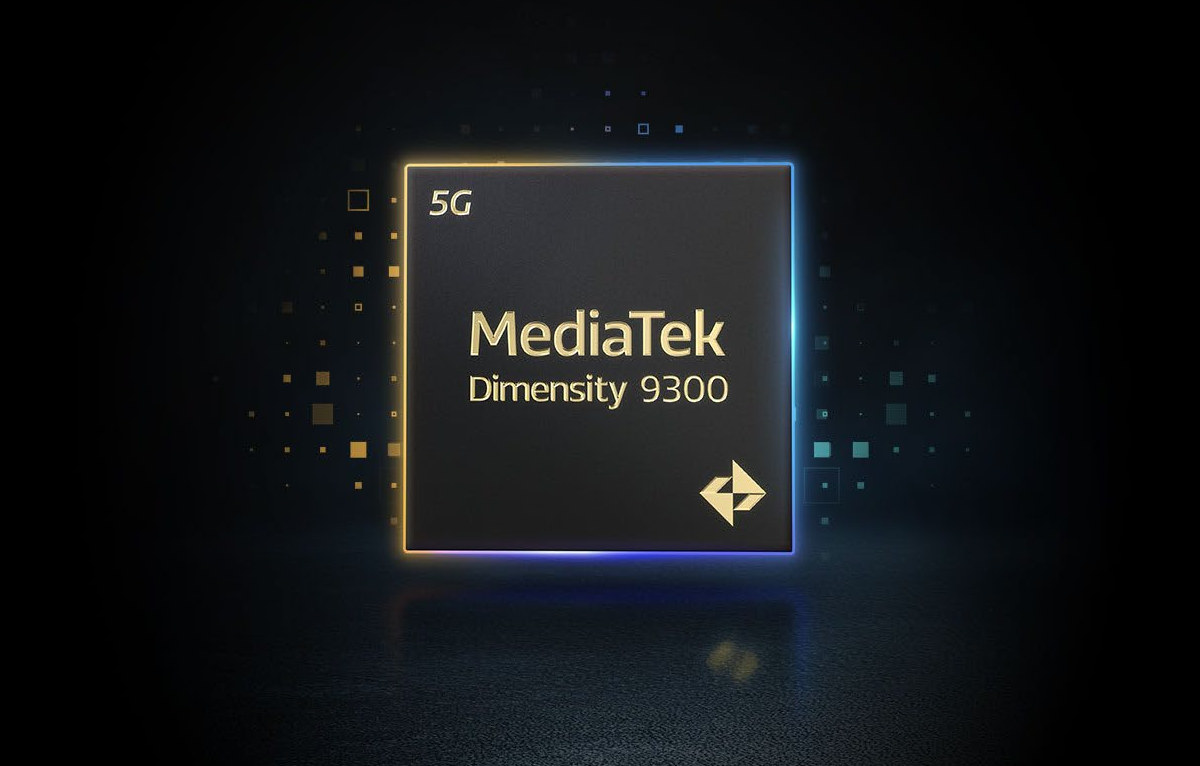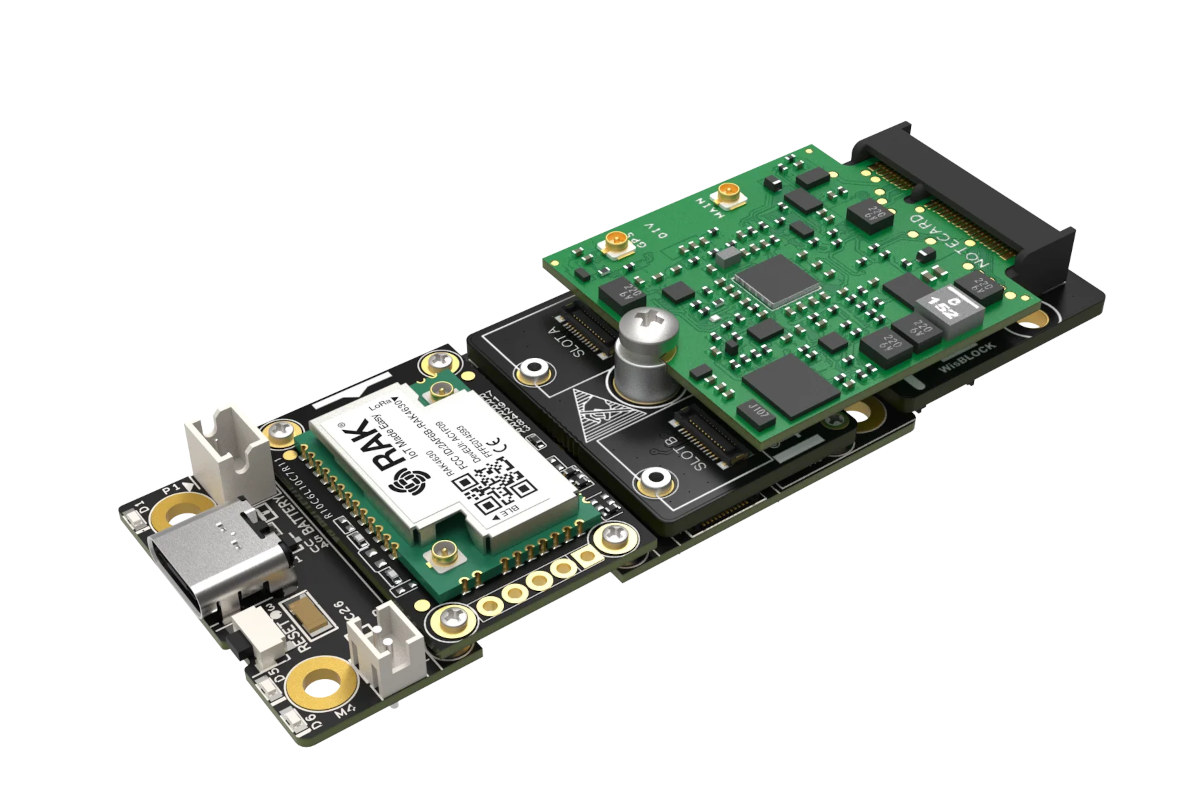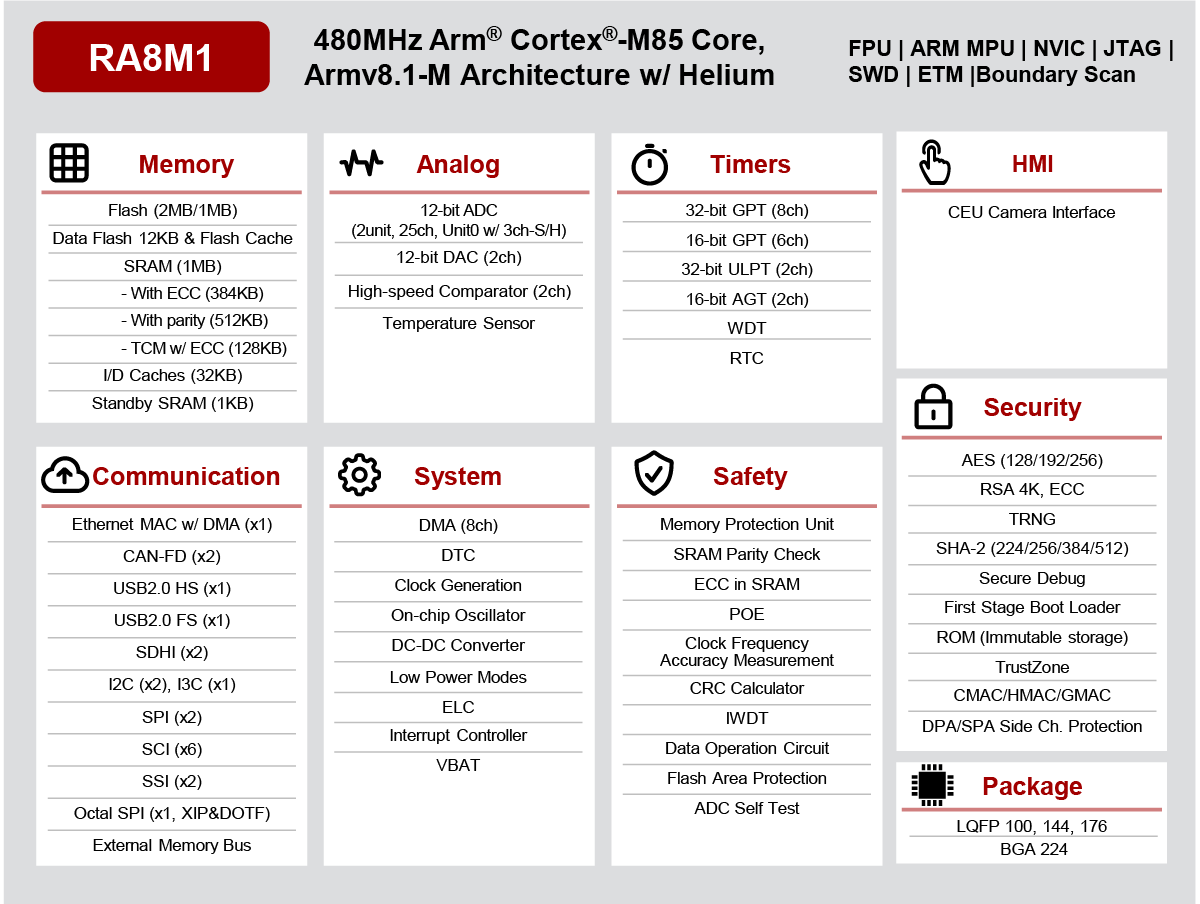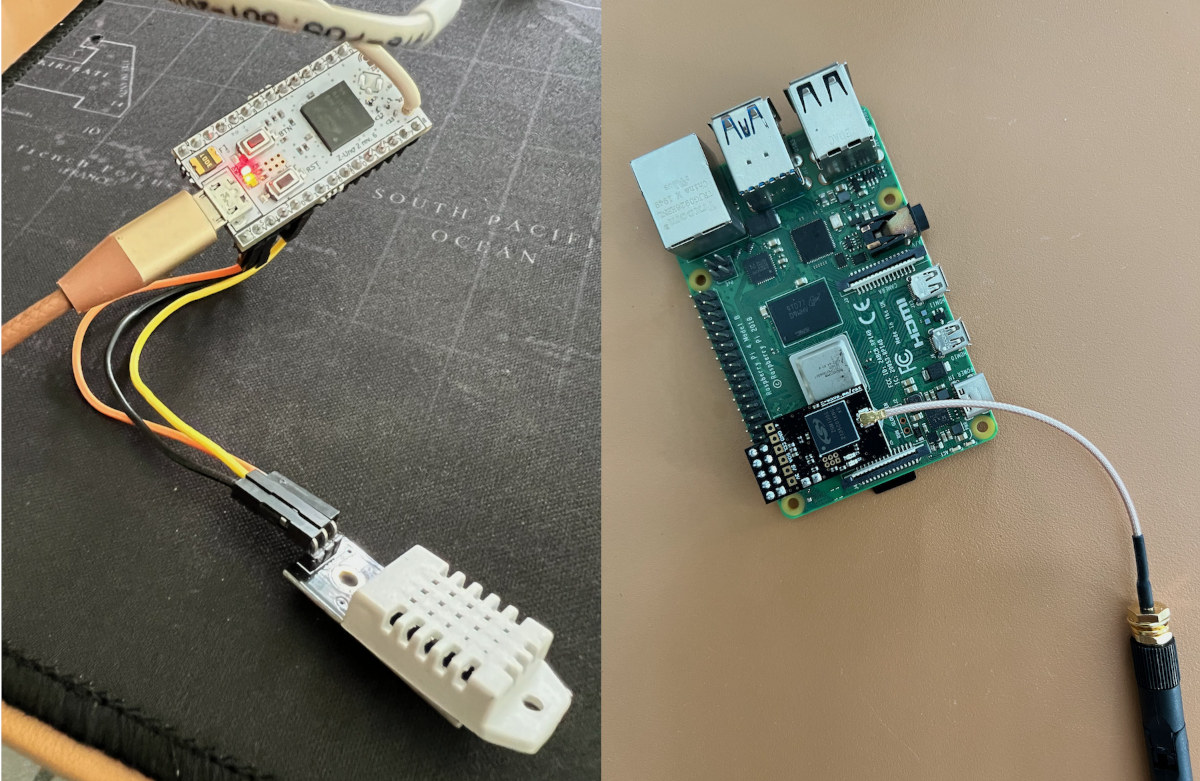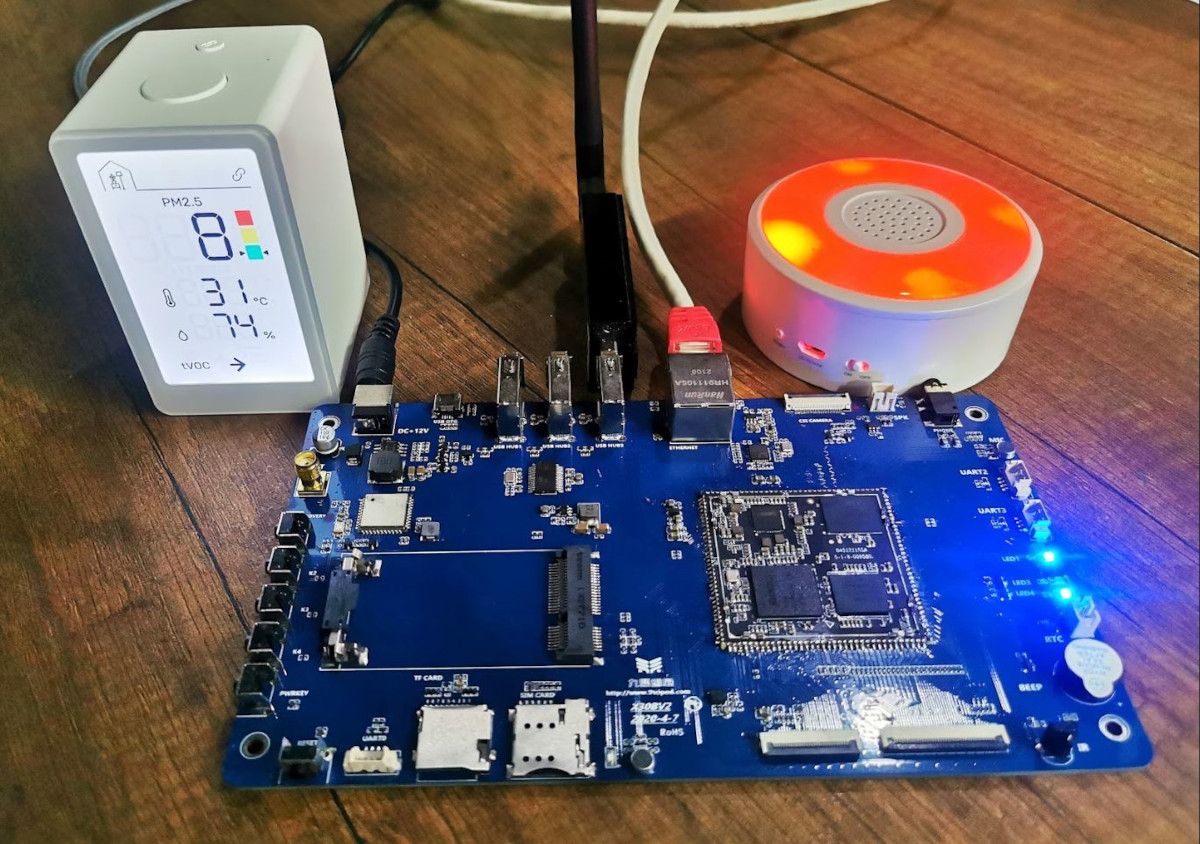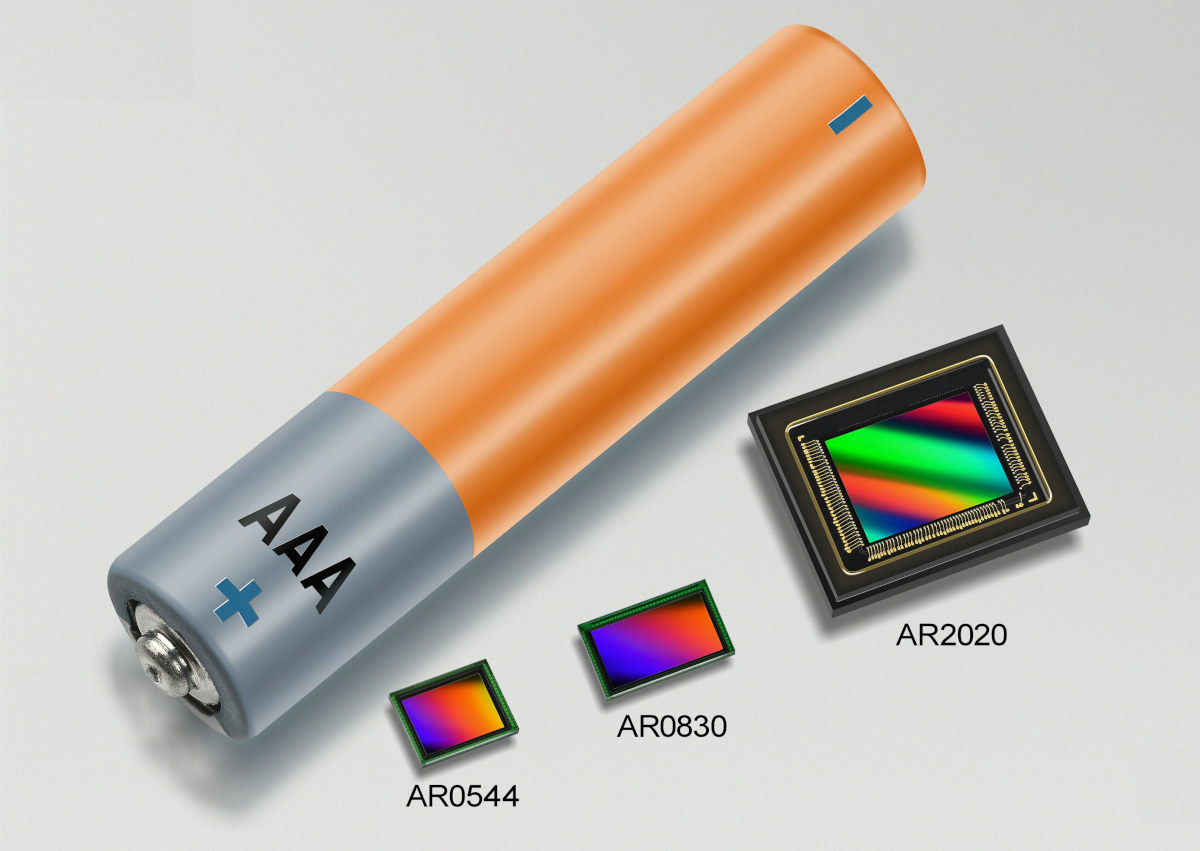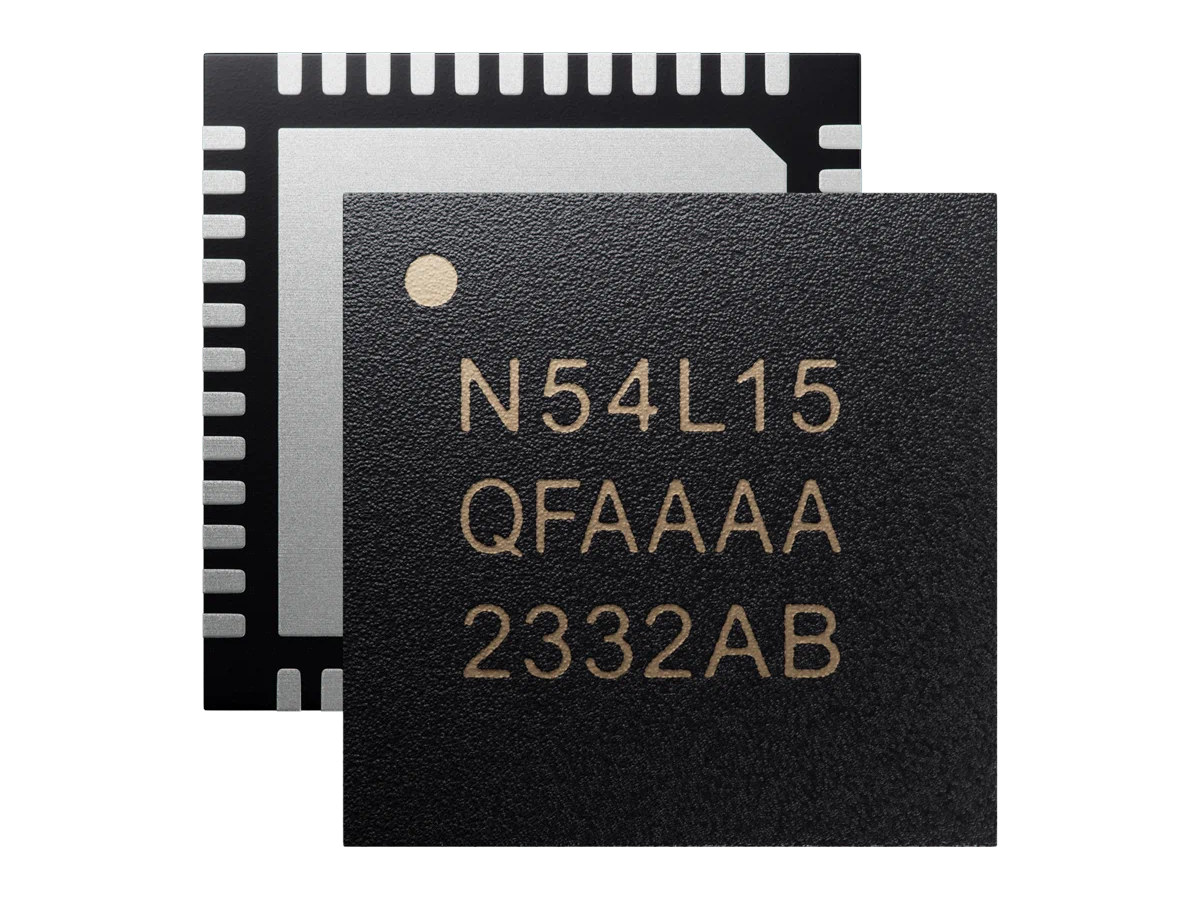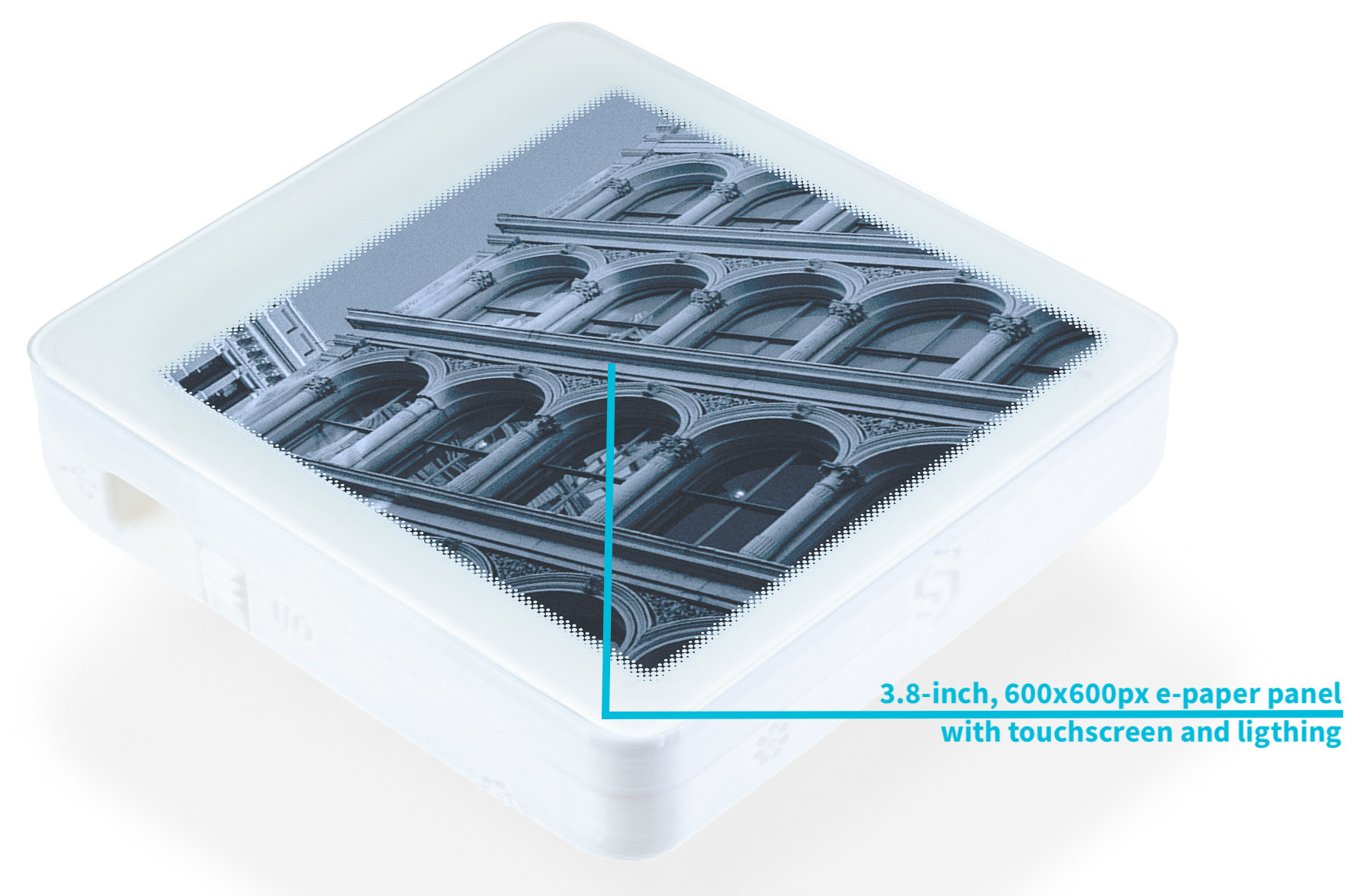MediaTek Dimensity 9300 is a premium octa-core 5G mobile SoC with two clusters of four Cortex-X4 cores and four Cortex-A720 cores, but doing without any Cortex-A520 efficiency core, plus the latest Arm Mali-G720 GPU, and a MediaTek APU 790 neural processing unit (NPU) capable of support generative AI and large language models (LLM) with up to 33 billion parameters. Arm invented big.LITTLE and then DynamIQ technologies in order to mix cores with different power efficiency and performance characteristics in order to improve power consumption. Their latest launches included the Cortex-X4 premium core, Cortex-A720 performance/big core, and Cortex-A520 efficient/LITTLE core, but MediaTek decided to do without the Cortex-A520 in the Dimensity 9300 which strikes me as odd for a mobile SoC where power efficiency is important for a long battery life. MediaTek Dimensity 9300 specifications: Octa-core CPU with DynamIQ 4x Arm Cortex-X4 at up to 3.25GHz 4x Arm Cortex-A720 up to […]
RAKwireless Blues.ONE LoRaWAN, LTE-M and NB-IoT devkit ships with Blues NoteCard including a 500MB data plan
RAKwireless Blues.ONE is a LoRaWAN IoT development kit that also supports LTE-M and NB-IoT cellular connectivity through the Blues NoteCard which comes with 10 years and an upgradeable 500MB cellular data plan. The devkit relies on the WisBlock modular IoT prototyping system with the RAK13102 WisBlock Blues Notecarrier, the Blues NoteCard, a WisBlock Base Board, and a WisBlock Core module. It can be used to prototype or develop IoT devices for industrial automation and asset-tracking applications. Blues.ONE specifications: RAK4631 WisBlock Core Module SoC – Nordic nRF52840 Arm Cortex-M4F microcontroller @ 64 MHz with 1 MB Flash, 256 KB RAM, Bluetooth Low Energy 5.0 protocol stack LoRaWAN – Semtech SX1262 LoRa Transceiver with LoRaWAN 1.0.2 protocol stack (supports Class A & C), global coverage support: RU864, IN865, EU868, US915, AU915, KR920, AS923 RAK19007 WisBlock Base Board 4x Sensor Slots 1x IO Slot 1x USB Type C connector Rechargeable battery connector Solar […]
Renesas RA8M1 is the world’s first Arm Cortex-M85 microcontroller
Renesas RA8M1 is an up to 480 MHz Arm Cortex-M85 microcontroller with Arm Helium technology to improve DSP and machine learning performance on Cortex-M microcontrollers, and delivering up to 6.39 CoreMark/MHz performance using EEMBC’s CoreMark, or over 3,000 CoreMark at 480 MHz. The Arm Cortex-M85 core was first unveiled in April 2022 as a faster Cortex-M7 alternative and new Arm Helium technology that delivers machine learning performance similar to Cortex-M55 application processor. We had some teases about the upcoming Renesas Cortex-M85 in the last year, but the world’s first Cortex-M85 microcontroller is finally here. Renesas RA8M1 key features and specifications: MCU core – Arm Cortex-M85 clocked at 240 to 480 MHz with Helium MVE (M-Profile Vector Extension) with 32KB I/D Caches and 12KB Data Flash Memory & Storage 1MB SRAM with TCM 1MB to 2MB Flash memory External memory interfaces (CS/SDRAM) Camera – 16-bit Capture Engine Unit (CEU) interface Communication […]
Review of RaZberry 7 Pro Z-Wave Raspberry Pi HAT and Z-Uno2 Z-Wave board
Z-Wave.Me has sent us a couple of Smart Home devices based on Z-Wave technology for review, namely the RaZberry 7 Pro Raspberry Pi HAT and the Z-Uno2 board. The Swiss company has primarily developed Z-Wave products for years and is a member of the Z-Wave Alliance. For those who are concerned about the issues of signal interference in the 2.4GHz range (WiFi, Zigbee, Bluetooth, and Thread), Z-Wave technology is an excellent choice because it operates on a less congested frequency range of 800-900MHz and the technology has been around for more than 20 years, resulting in a wide variety of Z-Wave devices available in the market, and they can work well together across different brands due to a proper certification process which is another advantage when compared to other protocols. The two devices we received are RaZberry 7 Pro, which is a shield that plugs into the 40-pin GPIO header […]
DSOM-020R PX30 development board review – Unboxing, Benchmarks, and Zigbee gateway
Dusun IoT DSOM-020R PX30 is a development board based on the company’s 1.3GHz Rockchip PX30K quad-core Cortex-A35 module of the same name designed for industrial applications that emphasize reliability and power efficiency. The board comes with various ports and expansion capabilities with support for monitors, microphones, and sensors through its carrier board in order to create prototypes and develop software before integrating the SOM DSOM-020 PX30 system-on-module into your own custom carrier board and product. As the company stipulates on the website, the development board is suitable for AIoT equipment, vehicle control, gaming platforms, smart displays, medical equipment, vending machines, and industrial computers. Let’s start the review with an unboxing of the DSOM-020R PX30 development board to find out more. DSOM-020R PX30 development board unboxing Dusun IoT sent us a basic kit of the DSOM-020R PX30 development board for review with a carrier board, the DSOM-020 PX30 system-on-module module, a […]
Tiny low-power Hyperlux LP camera sensors can extend battery life by up to 40%
onsemi has introduced the Hyperlux LP image sensor family for battery-powered industrial and commercial cameras with resolutions from 5MP to 20MP and a low power consumption that can extend battery life by up to 40% based on the company’s internal testing. Three models of the 1.4 µm pixel sensors will initially be offered: the 5MP AR0544, the 8MP AR0830, and the 20MP AR2020. Those camera sensors should eventually be found in a wide range of products such as smart doorbells, security cameras, AR/VR/XR headsets, devices leveraging machine vision, and video conferencing. The AR2020 is a 1/1.8inch Back-Side Illuminated (BSI) Stacked CMOS digital image sensor with a 5120 x 3840 active pixel array with a rolling shutter readout and capable of capturing images in either linear or enhanced Dynamic Range (eDR) modes. Its smaller siblings support the same features, but the AR0830 is a 1/2.9-inch image sensor with a 3840 […]
Nordic nRF54L15 Cortex-M33 wireless MCU halves Rx power consumption over nRF52 chips
Nordic Semiconductor has recently unveiled the 128 MHz nRF54L15 Cortex-M33 multi-protocol wireless microcontroller, the first from the nRF54L Series, and the second from the wider nRF54 family after the more powerful 320 MHz nRF54H20 dual-core Cortex-M33 MCU was introduced last Spring. While the nRF54H20 was designed to enable new types of IoT devices with a leap in performance and lots of resources with up to 2 MB flash and 1MB SRAM, the new nRF54L15 aims to be an upgrade to the nRF52 series with twice the performance and much better power efficiency, with for instance, half the Rx power consumption over its predecessor. Nordic Semi nRF54L15 key features and specifications: CPU Arm Cortex-M33 @ up to 128 MHz with up to 1.5 MB Flash + 256 KB SRAM RISC-V coprocessor for “software-defined peripheral” Wireless Bluetooth 5.4 LE with direction-finding, Bluetooth mesh, etc… Ready for future Bluetooth releases 802.15.4 radio for […]
Inkplate 4 TEMPERA ePaper display supports ESPHome, Arduino, and MicroPython (Crowdfunding)
Years after years, Soldered Electronics keeps on churning out new ESP32-powered ePaper displays and the latest model is the Inkplate 4 TEMPERA with a recycled 3.8-inch e-paper touchscreen with 600×600 resolution and plenty of sensors and features for a device of that size. The InkPlate 4 TEMPERA comes with a frontlight, a gyroscope, an accelerometer, temperature, humidity, air quality, and gesture sensors, Wi-Fi and Bluetooth connectivity, a built-in battery, and a low-power operating mode. Inkplate 4 TEMPERA specifications: Wireless module – ESP32-WROVER-E with ESP32 dual-core microcontroller with Wi-Fi 4 & Bluetooth 4.0 connectivity Memory – 8MB PSRAM Storage – 4MB flash PCB antenna Storage – MicroSD card slot Display (ED038TH2) 3.8-inch 3-bit grayscale (black, white, and six shades of gray) ePaper display with 600 x 600 pixels resolution Refresh rate 0.18s partial refresh rate in 1-bit (B&W) mode 0.86s full refresh mode in either 1-bit or 3-bit modes Multi-point touchscreen […]


